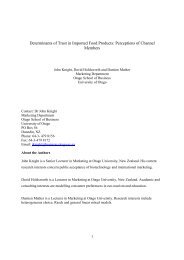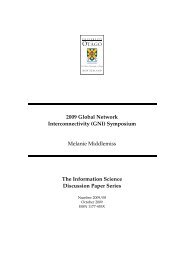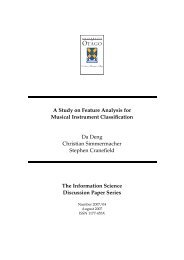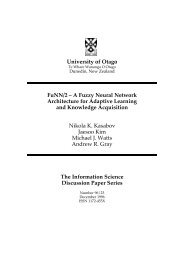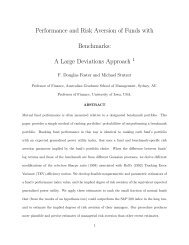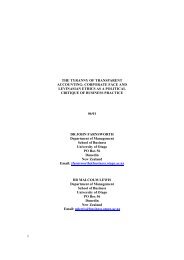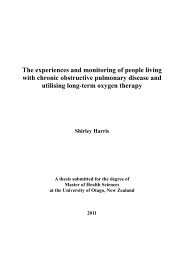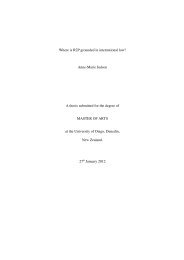University of Otago Cadastral - Otago University Research Archive
University of Otago Cadastral - Otago University Research Archive
University of Otago Cadastral - Otago University Research Archive
You also want an ePaper? Increase the reach of your titles
YUMPU automatically turns print PDFs into web optimized ePapers that Google loves.
--<br />
from<br />
interests <strong>of</strong> the owners <strong>of</strong> the land. Also, the standard used to measure these<br />
i m p r o v e mhave e n t been s foreign, westem-focussed standards that may not tit the cultural<br />
environments they were being introduced into and the expected d e v e l o p may<br />
e nnot<br />
t <br />
necessarily materialise.<br />
This paper raises questionsrelating to cultural costs incurred in adopting European styled<br />
cadastral systems in non-European jurisdictions. The paper examines the relationship<br />
between the cadastrl and the land tenure systems<br />
a western point <strong>of</strong> view, since<br />
the concepts did not exist in d e v e l o pjurisdictions. i n g <br />
Next the paper examines<br />
customary land tenure with examples<br />
from Africa and New Zealand. Then follows a<br />
section on the main cultural costs involved in cadastial r e f o r m . The paper concludes with<br />
a recommendation that it is not the cadastral system which should be reformed, rather,<br />
reformers should emphasise the need for information for development, which will normally<br />
include tenurial information.<br />
2 The <strong>Cadastral</strong> System as a Component <strong>of</strong> the Land Tenure System<br />
Land tenure is the collection <strong>of</strong> relationships which exists between the members <strong>of</strong> a society<br />
by virtue <strong>of</strong> their occupation<br />
and use <strong>of</strong> land. It embraces:<br />
institutional arrangements pertaining to property rights<br />
and duties. It also<br />
refers to the division <strong>of</strong> decision making among tenure groups,<br />
as owners<br />
and users <strong>of</strong> land combined with other means <strong>of</strong> production. These<br />
institutional arrangements may be legally established, customary,<br />
or<br />
enforced by a combination <strong>of</strong> both. They define the rights <strong>of</strong> property<br />
owners and users. [El-Ghonemy 1990, 81-82]<br />
Land tenure systems embody the arrangements whereby individuals or organisations gain<br />
access to economic or social opportunities through<br />
land. The various institutions <strong>of</strong> land<br />
tenure are instrumental in shaping the pattem <strong>of</strong> income distribution within a community<br />
[Ratcliffe 1976, 21]. lt is therefore an aspect <strong>of</strong> the social system, and, e s p e c in i a l l y<br />
agrarian societies, exerts a considerable influence on the structure and function <strong>of</strong> social<br />
s y s t e [Gadalla m s 1962, l2]. A system<br />
the proprietary land units, a degree <strong>of</strong> flexibility and security<br />
<strong>of</strong> land tenure establishes and maintains the size <strong>of</strong><br />
to use the land and incentives<br />
and opportunities for the use. It concems the complicated collection <strong>of</strong> rights to use space.<br />
’l‘hese tights and privileges are curtailed by certain restrictions. The rights relating<br />
ownership include [Ratcliffe 1976, 22]:<br />
to land<br />
3




